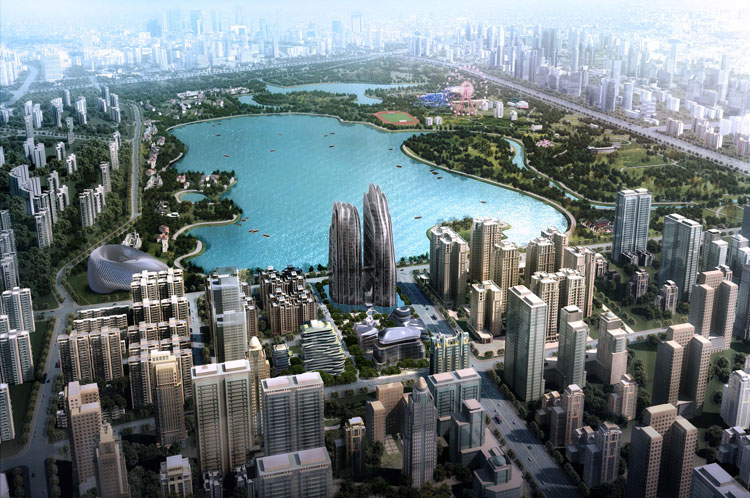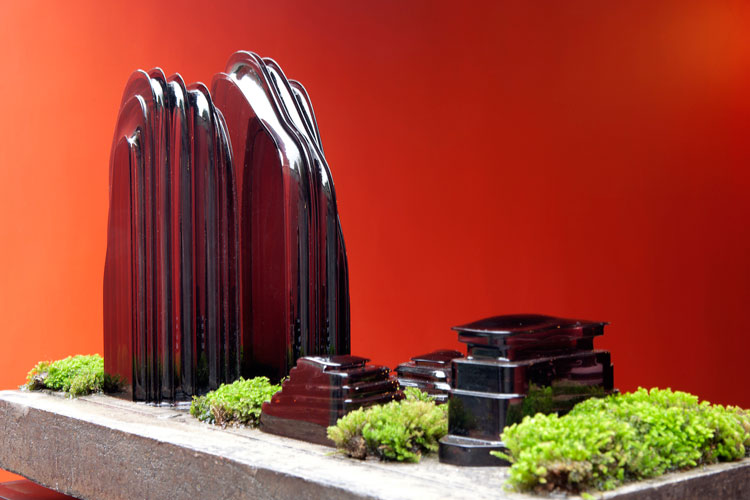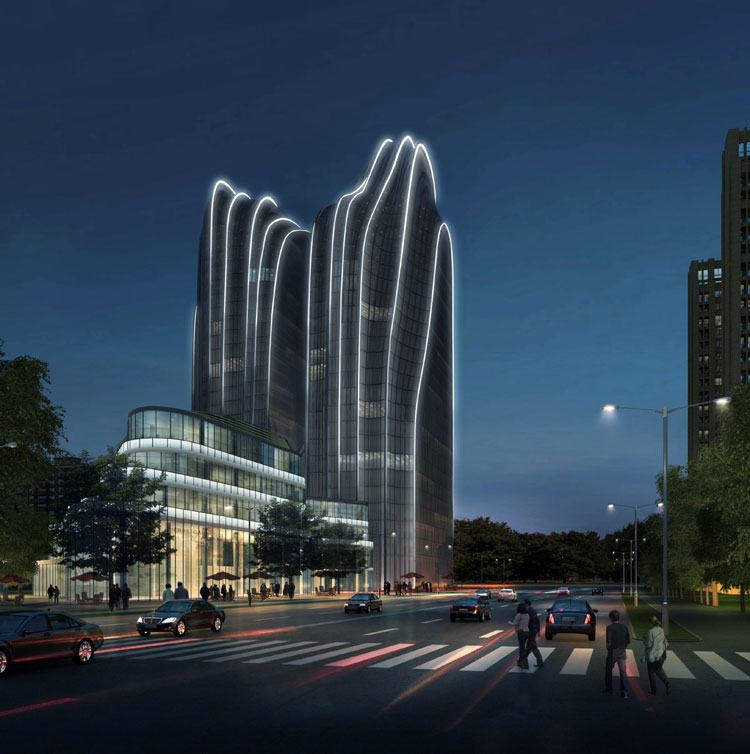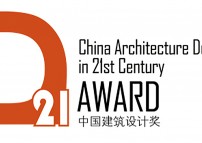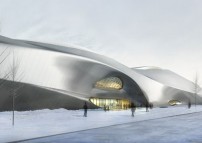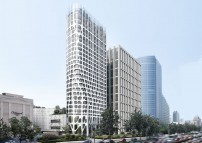At 6pm New York time, September 5th of 2013, a green building with distinct Oriental features designed by Ma Yansong was revealed at Times Square in New York city. Located along the lake of Beijing Chaoyang Park, this city complex is the continuation of “Shan-Shui City”– a design concept pursued by Ma Yansong. It is a new interpretation of China’s ancient natural philosophy in contemporary city. In this typical CBD area that is flooded with extreme-modernism buildings, Ma Yansong aims at infusing the vigorous Shan-Shui culture into the new urbanization with this “Chaoyang Park” project.
Since this project is adjacent to the world’s second largest city park, Ma Yansong hopes that it will not become the boundary that separates the park and the city. On the contrary, by introducing the Shan-shui elements into the design, the building and the park is to be merged into a whole landscape, so as to have nature extend into the city in order to create a land of idyllic beauty within the city. The design starts with the understanding that the park is part of the plot: by taking the natural beauty of lakes and mountains, the architectural complex can be read as a futuristic city landscape painting in which high-rise buildings act as the peaks, individual office buildings as the slope, high-end offices as the ridge and residential buildings as mountain ranges in combination with classical landscape elements like lakes, springs, forest, streams, valleys, rocks and peaks. As a result, the whole architectural complex looks less like they are built and more as if they are grown naturally from the surrounding environment. People can feel both the grandeur of the holistic landscape and its exquisite interior scenery.
This project is an ecological complex functioning mainly as offices and residential buildings. However, it goes beyond the usual concept of green building. It is a Chinese-featured green building developed with the “spirit of green” in mind. Ma Yansong is concerned with a new direction of contemporary architecture and city from the traditional culture. This also decides if Chinese architecture can find its own way for future urban development. The simulation of the landscape of an international metropolis should take over the traditional Shan Shui spirit and restore the natural traditional values followed with the innovation of architectural forms and the transformation of urban structures. In conformity with this idea, Ma Yansong will proceed with his exploration and practice of Shan Shui City.
